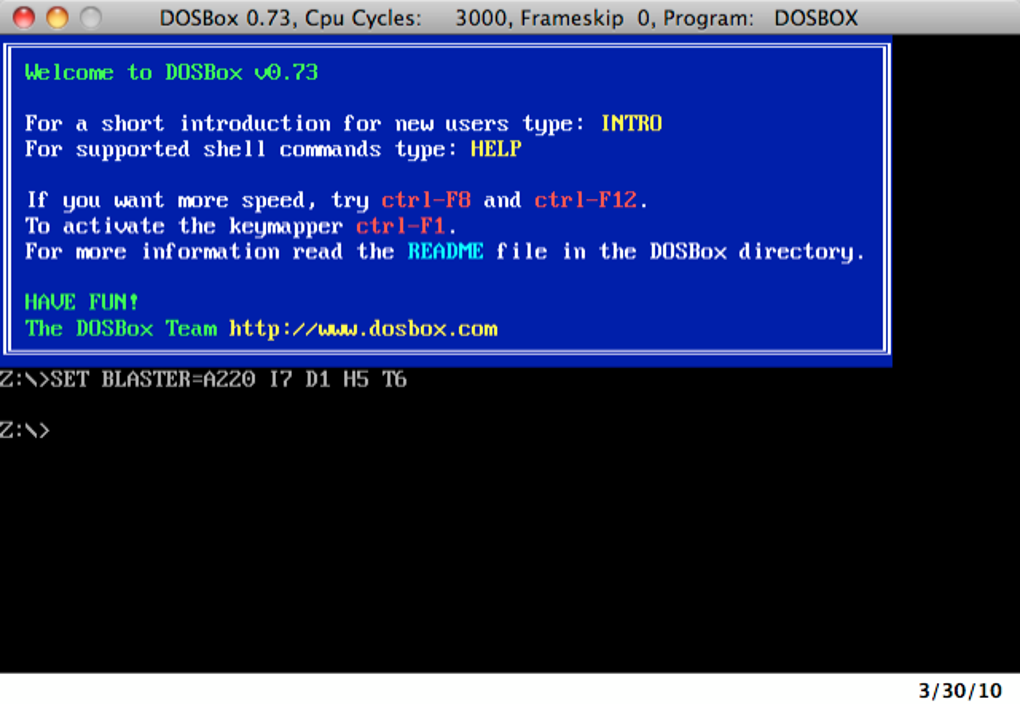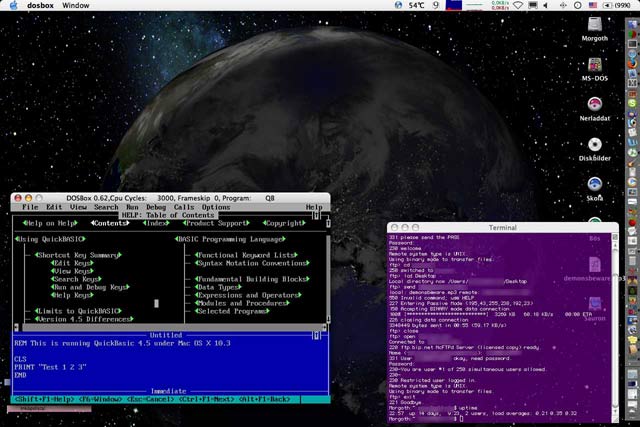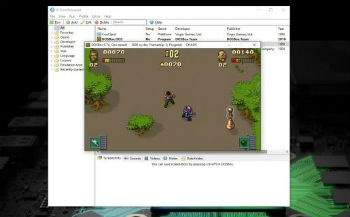

- IMGMOUNT DOSBOX MAC HOW TO
- IMGMOUNT DOSBOX MAC GENERATOR
- IMGMOUNT DOSBOX MAC SOFTWARE
- IMGMOUNT DOSBOX MAC DOWNLOAD
No wonder I was looking getting it to work on OSX too.

IMGMOUNT DOSBOX MAC HOW TO
The next tutorial will show you how to install and run Windows 3.11 using DOSBox.The Settlers 2 was the first game I bought, and it is still one of my all time favourites. Now that you have a working DOS installation, you can now obtain whatever DOSBox games and programs you fancy placing in your image. It is strongly recommended that you do this when DOSBox is not running and to unmount the image from Linux before connecting it to DOSBox.
IMGMOUNT DOSBOX MAC SOFTWARE
This way you can easily place your downloaded DOS software into the image wherever you please. Keep in mind that you may be able to mount and unmount it in your file manager instead of running the ‘mount’ command. $ sudo mount -t vfat -o uid=$UID /dev/loopX /mount/folder Assuming that you ended up creating only one partition on the disk, you can simply run these commands to mount the virtual partition (where ‘loopX’ is the loop device assigned and ‘/mount/folder’ is the mount directory): $ sudo losetup -Pf -show 256MBHDD.img We can do the same thing with hard disk images. The previous tutorial demonstrated how to mount individual floppy images in Linux to transfer files to and from them. If all went well, DOSBox will boot into the DOS system. Relaunch DOSBox to boot your new DOS installation. This isn’t absolutely necessary, but that is what the DOSBox Wiki has suggested.

Also, change the ‘imgmount’ parameters like so: When DOSBox has closed, edit the config again to have the boot command boot from the C: drive by changing the ‘-l’ parameter from ‘a’ to ‘c’. DOSBox will simply shut down if a reboot is requested. To change disks simply press Ctrl-F4 until the next disk is in the A: drive.Īfter the installation is complete, you will be asked to remove any floppies and restart. The reason why this tutorial recommends to run DOSBox from the terminal so you can see which floppies are currently loaded in the A: and B: drives. The installation will prompt you to change disks. Then all you need to do is follow the prompts on the screen. You may now launch DOSBox from the terminal, which will boot from the first floppy image referenced so make sure it’s the correct disk. Now add the relevant floppy images to the “BOOT” parameter so that DOSBox will boot from the first installation disk to install MS-DOS 6.22. 520 is the calculated number of cylinders. The numbers ‘512,63,16’ can remain unchanged. Open the DOSBox config file, go to the ‘autoexec’ section, and insert the IMGMOUNT command that needs to run. I have used random cylinder numbers without issue however, I would still recommend that you follow what the DOSBox Wiki recommends to ensure that you run into a few problems as possible. If you used ‘dd’ instead, you can calculate the number of cylinders by multiplying the size of the image in megabytes by 2.03125 (C = S * 2.03125). You will need it for the DOSBox IMGMOUNT command as it requires data about the disk structure. Take note of the number of cylinders from bximage.

All you do is run the command in the terminal and accept all of the defaults, but you may, of course, want to change the filename.
IMGMOUNT DOSBOX MAC DOWNLOAD
You can download and install this without having to download Bochs itself. The other program you can use is bximage. To do this, run dd: $ dd if=/dev/zero of=./256MBHDD.img bs=1M count=256 Using ‘dd’ Or ‘bximage’Ī hard drive with a reasonable capacity should be created. The other (which is covered here) is using ‘dd’ and fdisk.
IMGMOUNT DOSBOX MAC GENERATOR
The first is using the disk image generator that comes with Bochs PC (bximage) to create the disk image. This step would have to be the most complicated as it involves not only creating the image but also gathering a few details of the image such as disk information. This guide continues on from that as it goes through step by step how to properly create a hard disk image, hook it up to DOSBox, and install whichever DOS you want, be it MS-DOS, PC-DOS, or DR-DOS. The previous tutorial demonstrated the simplicity of booting from floppy images and creating other images using the tools provided by Linux.


 0 kommentar(er)
0 kommentar(er)
